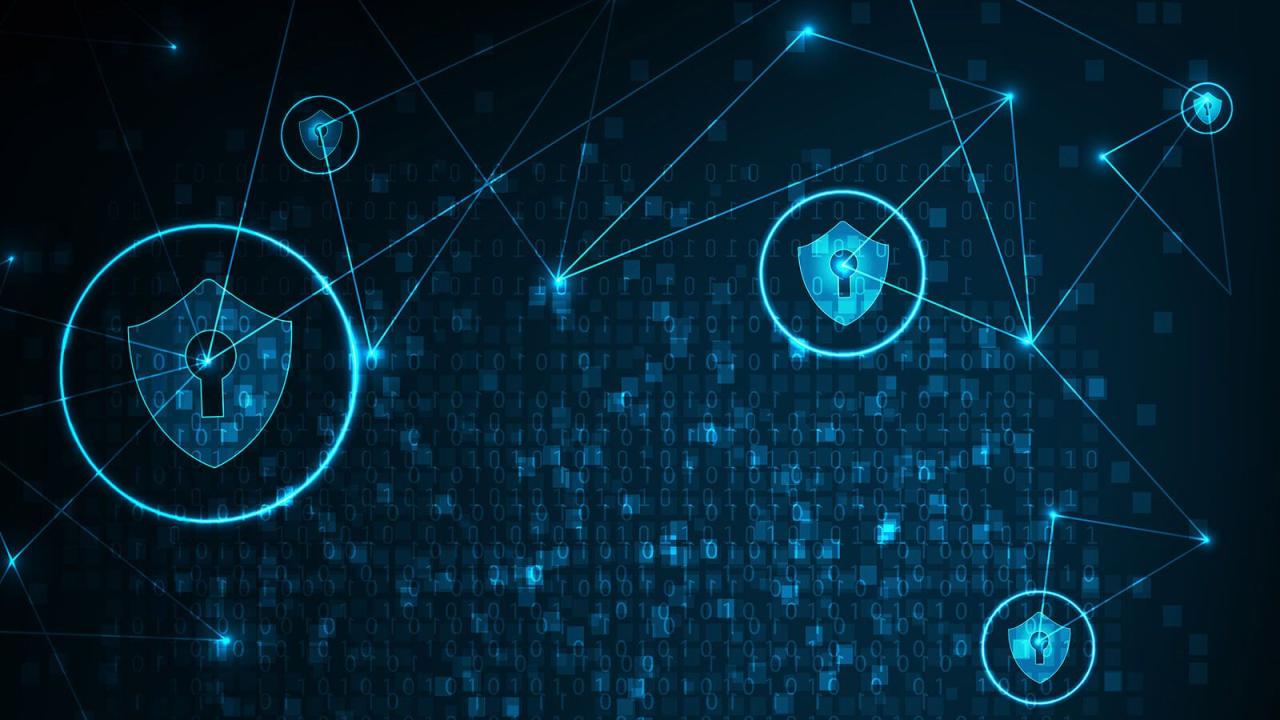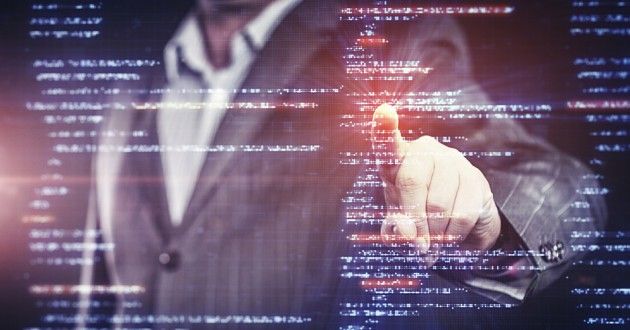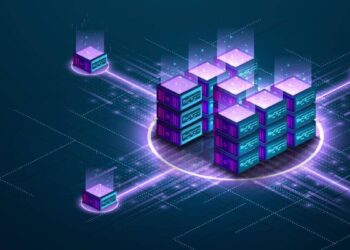In the digital age, the banking sector stands as a prime target for malicious actors. Holding vast sums of capital and sensitive personal data, financial institutions face a relentless barrage of sophisticated cyber threats. The traditional perimeter defenses of yesteryear are no longer sufficient; the very fabric of financial security is undergoing a dramatic evolution. This is the era of cybersecurity in banking: new defenses, a critical shift towards proactive, intelligent, and adaptive protection strategies. It’s about building multi-layered fortifications that leverage cutting-edge technologies like artificial intelligence, blockchain, and zero-trust principles to safeguard assets, maintain trust, and ensure the integrity of the global financial system. This isn’t just an IT concern; it’s a fundamental business imperative for survival and sustained growth in an increasingly interconnected and perilous digital world.
The Evolving Threat Landscape: Why Banks Are Prime Targets
To truly understand the urgency and complexity of new cybersecurity defenses in banking, we must first grasp the unique and escalating nature of the threats financial institutions face daily.
A. The Irresistible Lure of Financial Data and Assets
Banks and financial services firms are inherently attractive targets for cybercriminals due to the immense value they hold.
- High-Value Assets: Banks directly manage trillions of dollars in assets. A successful cyberattack can lead to direct financial theft on an unprecedented scale, impacting institutions, customers, and even national economies.
- Sensitive Personal Data: Financial institutions are custodians of highly sensitive Personally Identifiable Information (PII) including account numbers, credit card details, Social Security Numbers, addresses, and transaction histories. This data is highly valuable on the black market for identity theft, fraud, and other illicit activities.
- Intellectual Property: Beyond customer data, banks possess valuable proprietary algorithms, trading strategies, and technological blueprints that are attractive to state-sponsored actors and corporate espionage.
- Systemic Impact: A successful attack on a major financial institution can not only cause immediate financial loss but also erode public trust in the entire financial system, potentially leading to widespread panic and economic instability. Regulators globally view the financial sector as critical infrastructure.
B. Sophistication of Modern Cyberattacks
Cyber threats are no longer unsophisticated, individual endeavors. They are often highly organized, well-funded, and technically advanced.
- State-Sponsored Attacks: Nation-states increasingly engage in cyber warfare, targeting financial institutions for economic disruption, intelligence gathering, or to finance other operations. These attacks are characterized by advanced persistent threats (APTs) that are highly stealthy and persistent.
- Organized Cybercrime Syndicates: Large, transnational criminal organizations operate like businesses, with specialized roles for malware development, phishing campaigns, money laundering, and data exfiltration. They leverage sophisticated tools and tactics.
- Insider Threats: Malicious or negligent insiders pose a significant risk, leveraging their legitimate access to compromise systems or data. This could be disgruntled employees, individuals coerced by external actors, or simply accidental mishandling of sensitive information.
- Technological Arms Race: Attackers continuously innovate, developing new malware variants (ransomware, Trojans, zero-day exploits), sophisticated social engineering techniques (phishing, vishing, whaling), and highly targeted attacks that exploit new vulnerabilities almost as quickly as they’re discovered.
C. The Expanding Digital Footprint of Banking
As banking becomes increasingly digital and interconnected, its attack surface relentlessly expands, creating new vectors for compromise.
- Digital Transformation: The shift from branch-based to online and mobile banking, cloud adoption, open banking APIs, and increased reliance on third-party vendors (FinTechs) all create new entry points and interdependencies that malicious actors can exploit.
- Remote Work and Hybrid Models: The widespread adoption of remote and hybrid work models introduces new challenges in securing endpoints, home networks, and cloud access, extending the traditional corporate perimeter.
- IoT and Connected Devices: The integration of IoT devices (e.g., smart ATMs, connected branches) introduces new potential vulnerabilities if not secured rigorously.
- Third-Party and Supply Chain Risks: Banks rely on a vast ecosystem of third-party vendors, FinTech partners, and cloud service providers. A vulnerability in any link of this supply chain can expose the bank to significant risk, as seen in numerous recent high-profile breaches.
These factors combine to create an environment where traditional, reactive security measures are simply insufficient, necessitating a proactive and continuous evolution of defensive strategies.
Pillars of New Defenses: Architectural and Technological Shifts
The new era of cybersecurity in banking is characterized by a fundamental shift in defensive strategy, moving away from simple perimeter protection to a multi-layered, intelligent, and adaptive security posture.
A. Zero Trust Architecture (ZTA)
Perhaps the most significant architectural shift is the adoption of Zero Trust Architecture (ZTA), which operates on the principle: “never trust, always verify.”
- No Implicit Trust: Unlike traditional models that trust users and devices once they are inside the network perimeter, Zero Trust assumes that no user, device, or application, whether inside or outside the network, should be implicitly trusted. Every access request must be explicitly verified.
- Micro-segmentation: Networks are segmented into isolated zones, limiting lateral movement for attackers even if they breach one segment. This contains breaches and reduces the blast radius.
- Least Privilege Access: Users and applications are granted only the minimum necessary access rights required to perform their specific tasks. This minimizes the damage an attacker can inflict if credentials are compromised.
- Continuous Verification: Identity and device posture are continuously monitored and re-verified throughout a session, adapting to changing risk factors. Multi-Factor Authentication (MFA) is central to this.
- Contextual Policies: Access decisions are based on multiple contextual factors, including user identity, device health, location, time of day, and the sensitivity of the resource being accessed.
Implementing ZTA is a complex journey but offers unparalleled resilience against modern threats like ransomware and insider attacks.
B. Artificial Intelligence and Machine Learning (AI/ML) in Security
AI and ML are no longer futuristic concepts; they are vital tools enhancing every facet of cybersecurity.
- Threat Detection and Anomaly Recognition: AI/ML algorithms can analyze vast amounts of network traffic, user behavior, and system logs to identify subtle patterns indicative of malicious activity or anomalies that human analysts might miss, often in real-time. This includes detecting insider threats and sophisticated malware.
- Predictive Security: ML models can learn from historical attack data to predict potential future vulnerabilities or attack vectors, allowing banks to proactively strengthen defenses.
- Automated Incident Response: AI can automate initial incident response tasks, such as isolating infected systems, blocking malicious IP addresses, or triggering alerts, significantly reducing response times.
- Malware Analysis and Classification: ML can quickly classify new malware variants, even previously unseen ones (zero-day attacks), based on their behavior and characteristics, accelerating defense updates.
- Fraud Detection: AI/ML models are highly effective at detecting sophisticated payment fraud, credit card fraud, and loan application fraud by identifying unusual transaction patterns.
C. Blockchain and Distributed Ledger Technology (DLT) for Security
While often associated with cryptocurrencies, blockchain’s underlying principles offer unique security benefits for financial institutions.
- Immutable Record Keeping: The cryptographic immutability of blockchain ledgers makes it virtually impossible to tamper with recorded transactions or data without detection. This provides unparalleled integrity for critical financial records and audit trails.
- Enhanced Data Security and Privacy: DLT can enable secure, decentralized storage and sharing of data, potentially improving data privacy through cryptographic techniques and selective disclosure, especially in consortium blockchains.
- Identity Verification and KYC/AML: Blockchain-based identity solutions could offer more secure and efficient Know Your Customer (KYC) and Anti-Money Laundering (AML) processes, reducing fraud and streamlining compliance.
- Supply Chain Security: For complex financial supply chains involving multiple third parties, DLT can provide transparent and immutable tracking of data and processes, reducing risks associated with third-party vulnerabilities.
D. Cloud Security Posture Management (CSPM) and Cloud-Native Security
As banks migrate to the cloud, specialized security strategies are essential to manage the unique risks of cloud environments.
- Shared Responsibility Model: Understanding and implementing robust security measures within the bank’s responsibility in the cloud’s shared security model.
- Automated Configuration Checks: CSPM tools continuously monitor cloud environments for misconfigurations, policy violations, and compliance gaps, automatically identifying and often remediating security risks.
- Cloud Access Security Brokers (CASBs): CASBs extend security policies from on-premise to cloud applications, providing visibility, data loss prevention (DLP), threat protection, and compliance enforcement for SaaS, PaaS, and IaaS.
- Container Security: Securing containerized applications (Docker, Kubernetes) from build time to runtime, including image scanning, vulnerability management, and runtime protection for containerized workloads.
- Serverless Security: Addressing the unique security considerations of serverless functions, including input validation, least privilege for function execution roles, and monitoring for malicious invocations.
E. Threat Intelligence and Proactive Defense
Moving from a reactive to a proactive stance is crucial, driven by robust threat intelligence.
- Cyber Threat Intelligence (CTI): Collecting, analyzing, and disseminating actionable intelligence about emerging threats, attacker tactics, techniques, and procedures (TTPs), and indicators of compromise (IoCs) from various sources (government, industry, dark web).
- Attack Surface Management: Continuously identifying and inventorying all external-facing assets, including shadow IT, to understand and reduce the potential attack surface.
- Red Teaming and Penetration Testing: Regularly simulating real-world attacks (Red Teaming) and conducting deep penetration tests to identify vulnerabilities before adversaries do.
- Vulnerability Management and Patching Automation: Automating the identification, prioritization, and patching of vulnerabilities across the entire IT estate to minimize exploitable weaknesses.
Advanced Strategies and Operational Imperatives
Beyond specific technologies, new defenses in banking necessitate fundamental shifts in operational strategies, cultural alignment, and continuous improvement.
A. Security Orchestration, Automation, and Response (SOAR)
To handle the sheer volume and complexity of security alerts, automation is critical. SOAR platforms integrate various security tools, automate incident response workflows, and orchestrate security operations.
- Automated Incident Playbooks: Defining pre-built playbooks for common incident types, allowing for rapid, consistent, and automated responses (e.g., automatically isolating an infected endpoint, blocking a malicious IP, sending a notification).
- Contextual Enrichment: Automatically gathering additional context from threat intelligence feeds, asset databases, and user directories to help analysts make faster, more informed decisions.
- Reduced Alert Fatigue: Automating the triage of low-priority alerts, allowing human analysts to focus on complex, high-severity incidents.
- Faster Mean Time To Respond (MTTR): Significantly reducing the time it takes to detect, investigate, and remediate security incidents, minimizing potential damage.
B. Data Loss Prevention (DLP) and Data Classification
Protecting sensitive financial data wherever it resides is a paramount concern.
- Data Classification: Implementing robust data classification policies to identify and tag sensitive data (e.g., PII, financial records, intellectual property) across all systems.
- DLP Solutions: Deploying DLP tools that monitor, detect, and block unauthorized transmission or access to sensitive data, whether it’s in transit (network), at rest (storage), or in use (endpoints).
- User Behavior Analytics (UBA): Monitoring user activities to detect unusual patterns that might indicate data exfiltration or insider threats.
C. Strong Authentication and Identity Fabrics
Authentication is the first line of defense. New strategies go beyond simple passwords.
- Multi-Factor Authentication (MFA): Mandating MFA for all internal and external access points, making it significantly harder for attackers to compromise accounts even if they steal passwords.
- Passwordless Authentication: Exploring and implementing passwordless authentication methods (e.g., FIDO2 security keys, biometrics, magic links) that enhance both security and user experience.
- Identity Fabrics/Federation: Centralizing identity management across disparate systems (on-premise, cloud, third-party) to ensure consistent policy enforcement and streamlined access control.
- Adaptive Authentication: Adjusting authentication requirements based on real-time risk assessment (e.g., requiring additional factors if a login attempt comes from an unusual location).
D. Security Awareness and Human Firewall
Despite technological advancements, humans remain the weakest link. Continuous security awareness training is crucial.
- Phishing Simulations: Regularly conducting simulated phishing and social engineering attacks to educate employees on how to identify and report suspicious activities.
- Role-Based Training: Tailoring security training to specific roles and responsibilities, focusing on relevant threats and best practices.
- Security Culture: Fostering a pervasive security-first culture where every employee understands their role in protecting the organization’s assets and sensitive data.
- Reporting Mechanisms: Establishing clear and easy-to-use channels for employees to report suspicious emails, activities, or potential security incidents without fear of reprisal.
E. Regulatory Compliance and Governance
The banking sector is one of the most heavily regulated industries globally. New defenses must align with evolving compliance mandates.
- Adherence to Standards: Continuously ensuring compliance with regulations like GDPR, CCPA, PCI DSS, SOC 2, ISO 27001, NIST Cybersecurity Framework, and country-specific financial regulations.
- Automated Compliance Checks: Leveraging tools that can automate compliance auditing and reporting, identifying deviations from policies and regulatory requirements.
- Board-Level Oversight: Elevating cybersecurity to a board-level priority, ensuring sufficient budget, resources, and strategic direction are allocated.
- Cyber Resilience Planning: Developing comprehensive cyber resilience strategies that go beyond prevention to include detection, response, and rapid recovery from severe cyberattacks, ensuring business continuity.
The Future Trajectory of Banking Cybersecurity
The evolution of cybersecurity in banking is relentless, driven by the ever-increasing sophistication of threats and the continuous digital transformation of financial services. Several key trends are poised to shape its future trajectory.
A. Hyper-Automation and Autonomous Security Operations
The sheer volume of cyber threats will necessitate greater hyper-automation and eventually, more autonomous security operations.
- AI-Powered Decision Making: AI will move beyond anomaly detection to making semi-autonomous (and eventually fully autonomous) real-time defensive decisions, such as automatically quarantining threats, reconfiguring firewalls, or deploying patches.
- Self-Healing Security Systems: Infrastructure and applications will be designed with self-healing capabilities, automatically detecting and remediating security misconfigurations or vulnerabilities without human intervention.
- Predictive Cyber Defense: Advanced AI will anticipate new attack vectors and automatically deploy preventative measures before threats even materialize, based on global threat intelligence and behavioral models.
B. Quantum-Safe Cryptography (Post-Quantum Cryptography)
As quantum computing advances, it poses a significant threat to current encryption standards. The development and implementation of quantum-safe cryptography (also known as post-quantum cryptography or PQC) will become a critical imperative for banks.
- Algorithmic Transition: Banks will need to transition their entire cryptographic infrastructure (encryption, digital signatures, key exchange) to new, quantum-resistant algorithms that can withstand attacks from future quantum computers.
- Long-Term Data Protection: This is particularly critical for data with long shelf lives (e.g., customer financial records, intellectual property) that needs to remain secure for decades.
- Global Standardization: Collaboration among governments, industry, and academia to standardize PQC algorithms will be crucial for widespread adoption.
C. Deeper Integration of AI into Fraud Detection and AML
AI’s role in fraud detection and Anti-Money Laundering (AML) will become even more sophisticated.
- Real-time Behavioral Biometrics: AI will analyze subtle user behaviors (e.g., typing patterns, mouse movements, device usage) to continuously authenticate users and detect potential fraud in real-time, even after initial login.
- Graph Neural Networks for Financial Crime: Leveraging graph databases and graph neural networks to identify complex, non-obvious relationships and hidden patterns indicative of money laundering networks or organized fraud rings.
- Explainable AI (XAI) for Compliance: Developing explainable AI models to provide transparent, auditable reasons for fraud alerts or AML flags, addressing regulatory requirements for explainability.
D. Identity-Centric Security and Decentralized Identity
The focus will shift even more strongly to identity as the new perimeter, with advancements in decentralized and verifiable identity solutions.
- Verifiable Credentials (VCs): Using DLT and cryptography to issue self-sovereign, verifiable digital credentials that allow individuals and organizations to control their own identity data and selectively share it, streamlining KYC processes and enhancing privacy.
- Continuous Adaptive Trust: Identity and access management systems will continuously assess risk based on multiple dynamic factors, adapting access permissions in real-time.
- Biometrics and Multi-Modal Authentication: Greater reliance on advanced biometrics (e.g., facial recognition, voice prints, behavioral biometrics) combined in multi-modal authentication schemes for stronger, more user-friendly security.
E. Supply Chain and Third-Party Risk Fortification
Given the increasing reliance on third parties, securing the extended financial ecosystem will be paramount.
- Automated Vendor Risk Management: AI-powered platforms will automate the continuous assessment of third-party security postures, monitoring for vulnerabilities and compliance deviations in real-time.
- Shared Threat Intelligence Networks: Collaborative platforms for financial institutions to share anonymized threat intelligence about supply chain attacks and vendor vulnerabilities.
- Blockchain for Supply Chain Transparency: Leveraging DLT to create immutable and transparent records of third-party interactions, software provenance, and compliance adherence within the financial supply chain.
F. Cyber Resilience Engineering and Chaos Engineering
Moving beyond simply preventing attacks, banks will increasingly focus on their ability to withstand and rapidly recover from inevitable breaches.
- Chaos Engineering: Proactively injecting failures and simulated attacks into production systems to identify weaknesses in resilience and improve incident response capabilities.
- Automated Recovery Playbooks: Sophisticated automation to trigger recovery procedures, data restoration, and system reconfiguration in the event of a successful cyberattack, minimizing downtime and data loss.
- Business Continuity Integration: Tighter integration of cybersecurity resilience with overall business continuity and disaster recovery plans, making cyber-incidents a core part of organizational risk management.
Conclusion
The cybersecurity landscape in banking is a perpetual arms race, one that financial institutions cannot afford to lose. The traditional, perimeter-focused defenses are no longer adequate against the sophisticated and relentless threats of the digital age. Instead, the sector is rapidly adopting new defenses, characterized by a proactive, intelligent, and adaptive approach.
This shift is fundamentally altering how banks protect their vast capital and sensitive customer data. It involves the architectural transformation towards Zero Trust, the ubiquitous integration of AI and Machine Learning for predictive and automated defense, the strategic exploration of blockchain for immutable record-keeping, and rigorous cloud security posture management. Operationally, it demands comprehensive SOAR platforms, granular data loss prevention, robust identity management, and a continuously trained ‘human firewall’.
As we look to the future, the evolution will accelerate, driven by hyper-automation, quantum-safe cryptography, advanced AI in fraud detection, decentralized identity, and fortified supply chain risk management. For banks, cybersecurity is no longer merely a technical function; it is a core strategic imperative, an investment in trust, resilience, and the very continuity of their operations. Mastering these new defenses is not just about protecting assets; it’s about safeguarding the stability of the global financial ecosystem and ensuring confidence in the digital economy’s boundless potential.














